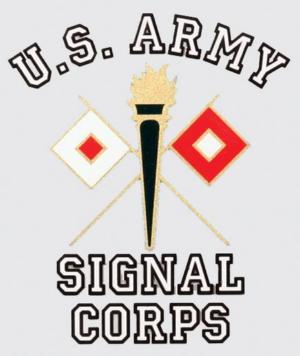 SKC Films Library |
||||||||||||||||||||||||||||
| SKC Films Library >> Military Science >> Military Signaling | ||||||||||||||||||||||||||||
| United States Army Signal Corps The mission of the Signal Corps is to provide and manage communications and information systems support for the command and control of combined arms forces.
Major Albert James Myer, an Army doctor, was the first to conceive of the idea of a separate, trained professional military signal service. He proposed that the Army use his visual communications system called "wig-wag" -- a semaphore system incorporating red and white flags -- while serving as a medical officer in Texas in 1856. When the Army adopted his system on June 21, 1860, the U.S. Army Signal Corps was born, with Myer as the first and only Signal Officer. During the Civil War, the Signal Corps operated air balloons and telegraph machines. By the time the United States entered World War I in 1917, the corps had integrated the airplane and more advanced technology into its communications systems. In addition to its primary role in military transmissions, the Signal Corps has also played a key role in producing training films for army and civilian personnel, and documenting combat missions. During World War II, noted Hollywood producers, directors, and photographers (including Darryl Zanuck, Frank Capra, John Huston, and others) all served in the Signal Corps. They applied their talents in the motion picture studio to the field of battle, while dozens of others provided instruction to the personnel. Signal Corps photographers and filmmakers documented every major military campaign in the European Theater. They were also among the first to document evidence of Nazi atrocities, including the concentration camps. The U.S. Army Signal Corps is headquarted at Fort Gordon, Georgia, which can be located online at www.gordon.army.mil. Important Dates in the History of the Signal Corps
SEE ALSO |
||||||||||||||||||||||||||||
| SKC Films Library >> Military Science >> Military Signaling This page was last updated on 10/07/2017. |
